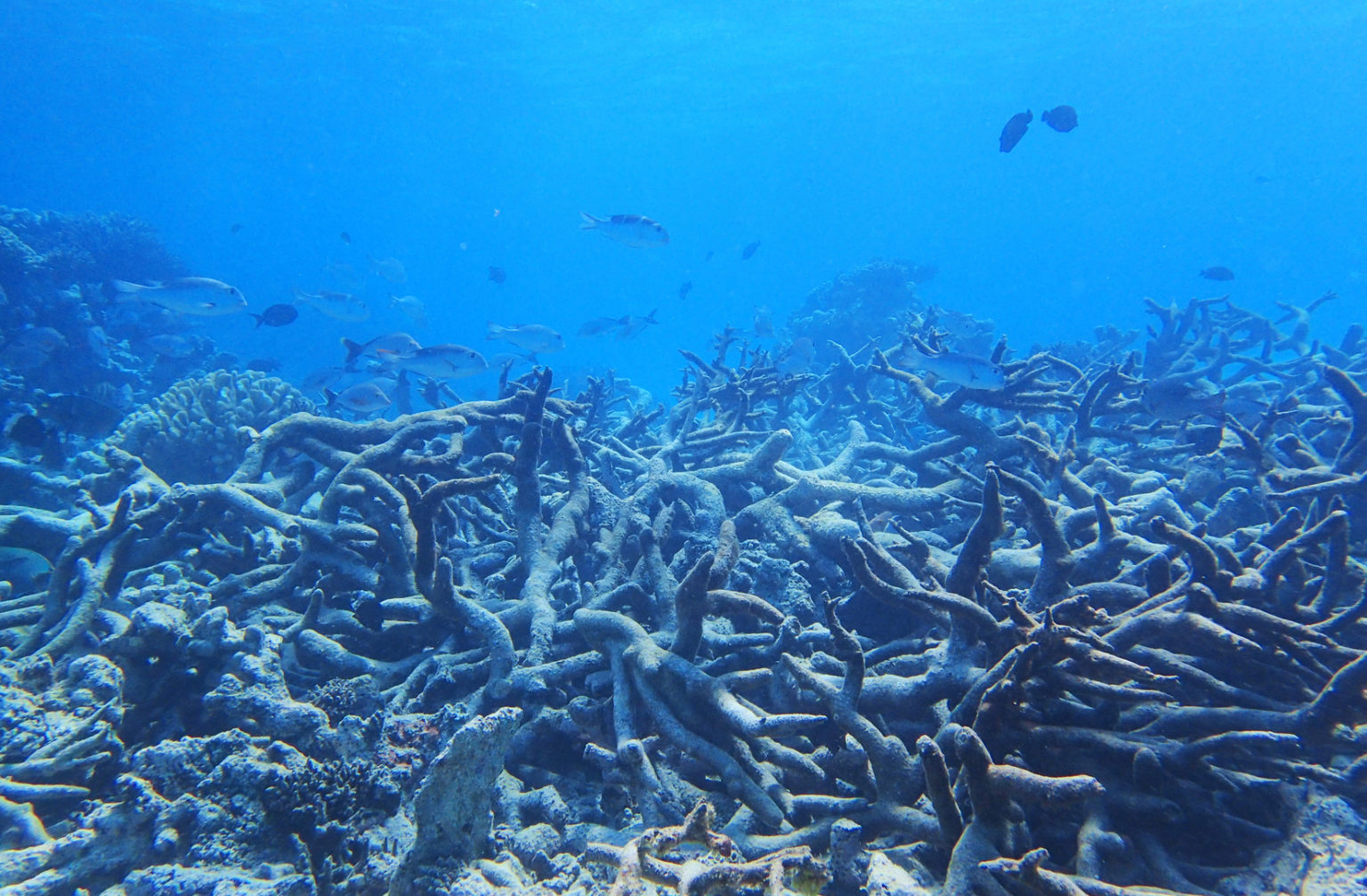Coral reefs across the globe cannot be saved from devastating bleaching events unless rapid action is taken to cut greenhouse gas emissions from fossil fuel burning, major new research has found.
Published in the journal Nature, the research finds the world’s biggest reef system — the Great Barrier Reef (GBR) in Australia — has been suffering the impacts of global warming since its first mass bleaching hit in 1998.
Now, after two further major bleaching events, the authors says nine out of ten individual reefs that make up the 1400-mile long system along the Queensland coast have bleached at least once.
In early 2016, record warm ocean temperatures turned corals a ghostly white — a stress reaction where the corals expel the special algae that give them their colour and much of their nutrients.
As a result, almost a quarter of all corals on the reef, mainly in the once “pristine” northern section, died. The bleaching on the GBR was part of the third mass global bleaching event declared by the U.S. National Oceanic and Atmospheric Administration (NOAA).
The research comes as a fourth major mass bleaching event is unfolding across the iconic reef, only a year after the most devastating bleaching in the reef’s history.
Global Warming Already Hitting Reefs
Bleaching occurs when corals sit in unusually warm water for too long. As a result, the corals expel the algae that gives them their color and much of their nutrients, leaving them starving. Corals can recover and the algae can repopulate, but if the heat stress is severe then the coral dies. Even recovered corals tend to be weakened.
The new study, co-written by more than 45 scientists, looked at the bleaching events on the GBR in 1998, 2002, and 2016.
There was no evidence, the researchers found, that protecting reefs from overfishing or local pollution gave them resistance to the extreme heat stress that caused them to bleach.
Speaking to the Positive Feedback podcast, lead author Professor Terry Hughes, director of the Australian Research Council Centre of Excellence for Coral Reef Studies at James Cook University, said: “People often refer to global warming as a threat to coral reefs. The inference of the word ‘threat’ is that it’s something that might happen in the very near future.
“But the reality is that coral bleaching is already a recurrent event that has been happening now for about 20 years on most of the coral reefs of the world, including Australian coral reefs.
“We can’t climate-proof reefs. Sure, there’s stuff we need to do be doing locally around water quality and fisheries management, but doing these two things alone is not going to protect the reefs in the long term. The elephant in the room here is climate change.”
Paris Targets Not Enough
The international climate agreement signed in Paris asks nations to submit plans to cut emissions that eventually will keep global warming “well below 2 C” with an ultimate aim to keep temperatures to 1.5 Celsius.
But Hughes pointed out the severe bleaching events across the Great Barrier Reef had all occurred with global warming at less than 1 C.
“Those targets of 1.5 C and 2 C won’t be very comfortable for the world’s coral reefs. We are going to see more of these bleaching events in the future,” he said.
The researchers also tested a hypothesis that if reefs had been bleached in the past, this could give them a “protective effect.”
After analyzing the pattern of bleaching, the researchers “find no evidence for a protective effect of past bleaching.”
While it’s known that some corals are more resistant to bleaching than others, the researchers also found that in extreme bleaching events like that of 2016, even the hardiest corals can die.
“Thus, even species that are winners on relatively mildly bleached reefs joined the ranks of losers where bleaching was more intense,” they wrote.
Generally speaking, corals and reef habitats can survive and recover from some coral bleaching episodes if those reefs get enough time to recover before the next bleaching hits.
Recovery Time
But the study explains that even “good colonizers and fast growers” can take 10 to 15 years to recover.
The researchers do say that improving water quality and protecting areas from fishing can “improve the prospects for recovery” from bleaching, but only if major events don’t come around too quickly.
Any attempts at bolstering the ability of corals to recover from bleaching “will become more challenging and less effective” as the decades wear on, “because local interventions have no discernible effect on resistance of corals to extreme heat stress,” the researchers say.
“Securing a future for coral reefs, including intensively managed ones such as the Great Barrier Reef, ultimately requires urgent and rapid action to reduce global warming,” the paper concludes.
Bleached staghorn coral on the Great Barrier Reef between Townsville and Cairns, Australia, March 2017. Credit: Bette Willis/ARC Centre of Excellence for Coral Reef Studies
Australia’s Federal Government has approved plans for its biggest ever coal mine, Adani’s Carmichael mine, in Queensland with the coal to be exported on ships through the reef’s waters.
“It doesn’t seem terribly logical, does it,” Hughes told Positive Feedback.
“There seems to be a policy disconnect in Australia between the government’s aspirations to manage wisely the Great Barrier Reef for future generations on the one hand, versus current plans to expand the fossil fuel industry, including the Adani mine.”
Dr. Mark Eakin, director of Coral Reef Watch at the National Oceanic and Atmospheric Administration, and a co-author of the study, says the rising ocean temperatures are the cause of the bleaching events.
These rising ocean temperatures are caused by the “increase in heat trapping gases in the atmosphere — CO2, methane, and others — and this is being driven largely by humans and our burning of fossil fuels.”
Eakin’s Coral Reef Watch program is based at NOAA’s National Environmental Satellite Data and Information Service — an area reportedly being considered by the Trump administration for budget cuts as high as $513 million.
“It’s not the greatest situation by any means,” said Eakin.
“We know for coral reefs that the real threat is coming from climate change that’s being driven by burning fossil fuels and that’s a tough situation to be in when those are now being encouraged by our government.”
Main image: Graveyard of Staghorn coral, Yonge reef, Northern Great Barrier Reef, October 2016 .Credit: Greg Torda/ARC Centre of Excellence for Coral Reef Studies
Subscribe to our newsletter
Stay up to date with DeSmog news and alerts








